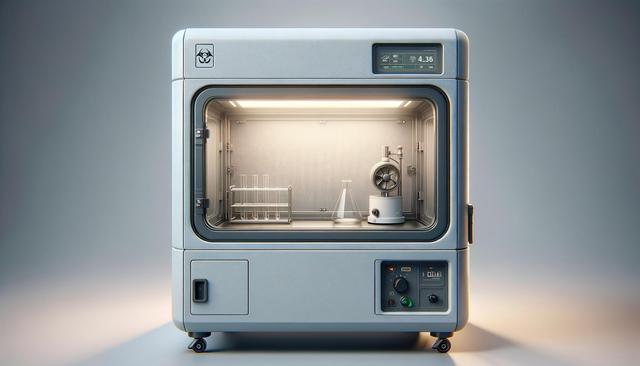Understanding the Role of Portable Fume Hoods
Portable Fume Hoods: Safe, Mobile Protection for Lab Environments are specially designed to offer localized ventilation in laboratory settings where hazardous substances are used. Unlike traditional, fixed systems, these hoods can be moved to different areas of a lab or even transported between facilities. This flexibility allows scientists and technicians to conduct experiments or handle chemicals in a more versatile and controlled atmosphere. They work by drawing air away from the user and filtering out contaminants before releasing the cleaned air back into the environment or venting it externally, depending on the unit’s configuration. Many models are equipped with activated carbon or HEPA filters, depending on the types of fumes they are designed to manage.
The adoption of portable fume hoods is particularly valuable in labs that have dynamic workflows or where space is limited. Their mobility means that safety measures can be brought directly to the point of use, which is a vital benefit in emergency situations or when dealing with unpredictable chemical reactions.
Key Features That Support Laboratory Safety
One of the major advantages of Portable Fume Hoods: Safe, Mobile Protection for Lab Environments is their built-in safety features. These hoods are engineered to reduce exposure to toxic vapors, ensuring that laboratory personnel remain safe during experiments. The ability to isolate and filter out harmful substances directly at the source is a game-changer in maintaining air quality and regulatory compliance. Some common features include:
- Adjustable airflow settings for different hazard levels
- Transparent panels for clear visibility and monitoring
- Locking caster wheels for stable positioning
- Easy-to-replace filters for ongoing performance
These features not only protect users but also support safe handling protocols by minimizing contamination risks and improving ergonomic access to lab equipment.
Applications Across Laboratory Settings
Portable Fume Hoods: Safe, Mobile Protection for Lab Environments are useful in a range of laboratory environments, from academic institutions to industrial research facilities. They are particularly beneficial in settings where dedicated fume extraction systems are not practical or where temporary setups are needed. Their applications include:
- Educational labs where experiments vary daily
- Field research sites lacking permanent infrastructure
- Temporary setups during renovations or expansions
- Supplemental protection in high-traffic lab areas
In clinical environments, these hoods are often used when handling biological samples or volatile reagents. Their portability ensures that personnel can conduct tests or experiments safely regardless of the location within the facility.
Maintenance and Operational Considerations
Maintaining Portable Fume Hoods: Safe, Mobile Protection for Lab Environments involves regular inspections and timely replacement of filters. The efficiency of these units depends heavily on the condition of their filtration systems, as saturated or damaged filters can compromise safety. Labs should establish a maintenance schedule that includes:
- Routine airflow testing and calibration
- Visual inspections for wear and damage
- Proper documentation of filter changes
Operational training is also crucial to ensure users understand how to position and use the fume hood effectively. Misuse, such as blocking airflow or overloading the workspace, can reduce the unit’s effectiveness. Clear guidelines and periodic refresher training can help maintain optimal safety standards.
Choosing the Right Model for Your Needs
When selecting Portable Fume Hoods: Safe, Mobile Protection for Lab Environments, labs should consider a range of factors including the types of substances handled, required airflow capacity, and the size of the work surface. Not all units are designed for the same hazards, so understanding the chemical compatibility of the filters is essential. Additionally, considerations such as noise levels, power requirements, and ease of mobility play a role in choosing the right hood.
It may also be useful to consult with safety officers or industrial hygienists during the selection process to ensure compliance with local health and safety regulations. Investing in a unit that aligns with the lab’s specific needs can lead to better performance and longer operational life, while also supporting a safer work environment.
Conclusion: Enhancing Lab Safety with Portable Solutions
Portable Fume Hoods: Safe, Mobile Protection for Lab Environments provide a practical and effective solution for enhancing safety in dynamic laboratory settings. Their mobility, ease of use, and ability to offer targeted ventilation make them a valuable asset for labs handling hazardous materials. By selecting the appropriate model, maintaining it properly, and using it in accordance with safety protocols, labs can significantly reduce exposure risks and ensure a healthier working environment for their personnel. Whether used as a primary ventilation solution or a supplementary safety measure, portable fume hoods are a smart investment for modern laboratories focused on flexibility and protection.




Leave a Reply